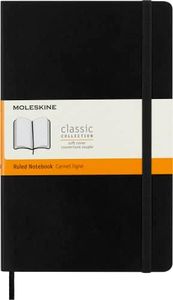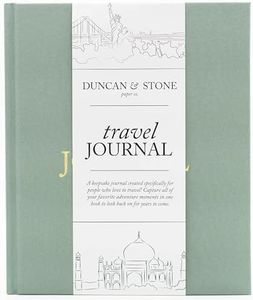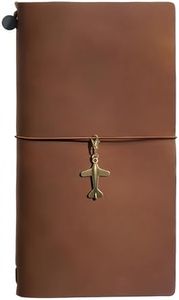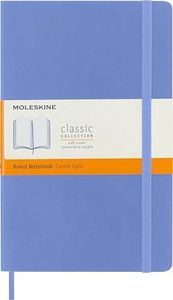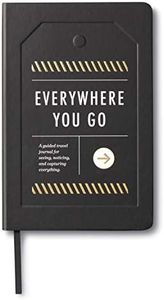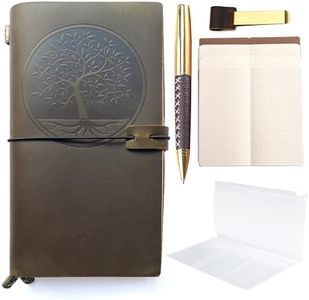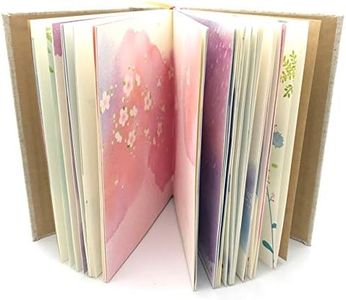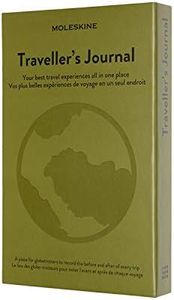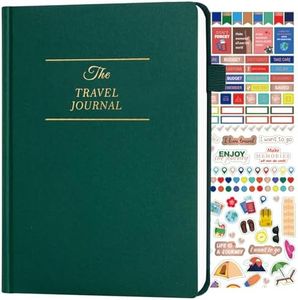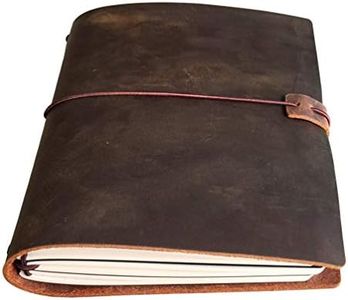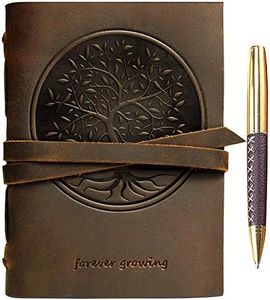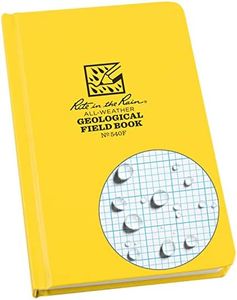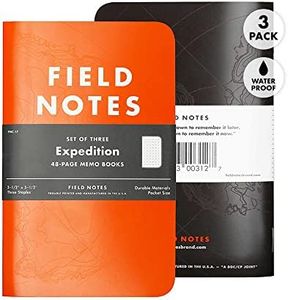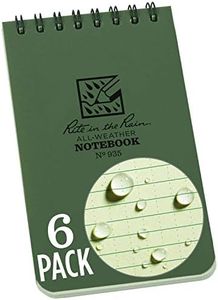We Use CookiesWe use cookies to enhance the security, performance,
functionality and for analytical and promotional activities. By continuing to browse this site you
are agreeing to our privacy policy
10 Best Travel Journals
From leading brands and best sellers available on the web.Buying Guide for the Best Travel Journals
Choosing the right travel journal can greatly enhance your travel experience, whether you love writing, doodling, or just keeping memories organized. The ideal travel journal should match your personal style, travel habits, and the way you prefer to document your journeys. By understanding the main features of travel journals, you can select one that encourages you to keep recording your adventures, is easy to use on the go, and fits your travel lifestyle.Size and PortabilitySize and portability describe how large the journal is and how easy it is to carry around. Some journals are compact and pocket-sized, while others are bigger and offer more space for writing or sketching. If you travel light or like to jot things down on the move, a smaller journal may be best, as it fits easily into your bag or pocket. If you prefer to write longer entries, scrapbook, or include printed photos, a larger journal might be better. Consider how much space you have in your luggage and how you plan to use the journal when deciding what size is right for you.
Binding TypeThe binding type refers to how the pages of the journal are held together, which affects durability and how flat the journal lays when open. Common binding types include spiral-bound, stitched, and glue-bound. Spiral bindings let you fold the journal back on itself, which is great for writing in tight spaces, but the spirals can sometimes get caught in bags. Stitched bindings are classic and durable, making them ideal for long-term keepsakes. Glue-bound journals might be less durable but are often slimmer and lightweight. Your choice here depends on whether you need something sturdy for lots of writing or something light for easy carrying.
Paper QualityPaper quality is about how thick, smooth, and durable the pages are. High-quality paper prevents ink from bleeding through and stands up to erasing, gluing, or painting. If you only use pencils or ballpoint pens, most paper will do. For fountain pens, markers, or adding watercolors and souvenirs, look for thicker, acid-free paper. Thicker pages also make the journal feel more substantial and help preserve your work for years. Think about how you like to write or create, and pick paper suited to your tools and style.
Page LayoutPage layout determines what you see on each page—like lined, dotted, blank, or grid pages. Lined pages make neat writing easy, while blank pages give more freedom for drawing or scrapbooking. Dotted and grid pages offer structure but also flexibility, making them a favorite for those who combine writing with sketches or lists. Consider whether you write a lot, draw often, or want a mix of both, and choose a layout that matches your journaling habits.
Cover Material and DurabilityThe cover not only affects the journal’s look and feel but also its ability to protect your notes from stains, moisture, or bending during travel. Hardcovers offer strong protection and can double as a writing surface, but they add weight. Softcovers are lighter and more flexible for packing, though a bit less protective. Some journals feature water-resistant or leather covers for extra durability and style. Think about where and how your journal will travel: rough journeys or outdoor adventures might call for tougher covers, while leisure trips could allow for lighter options.
Extra FeaturesExtra features include things like built-in pockets, pen holders, page markers, or closure straps. Pockets are handy for stashing tickets, receipts, or photos. Pen loops ensure you always have something to write with. Closure straps (like elastic bands) keep your journal securely shut and prevent pages from bending in your bag. Page markers help you quickly find where you left off. Consider which small additions would make writing on the road easier for you.
